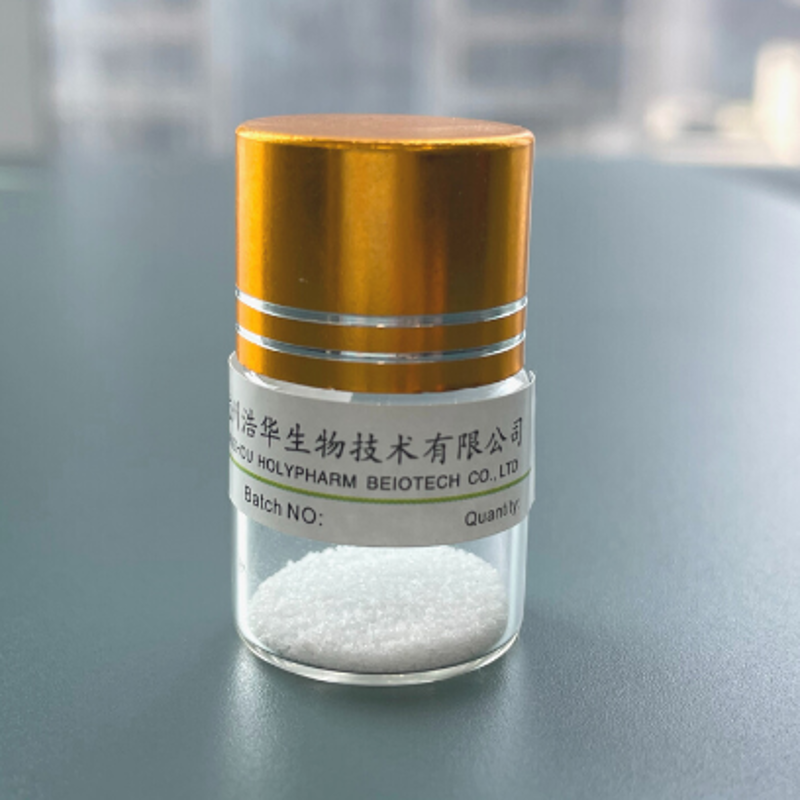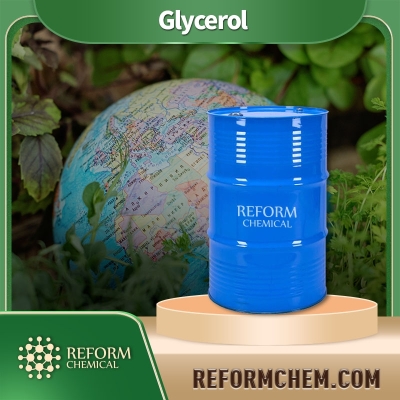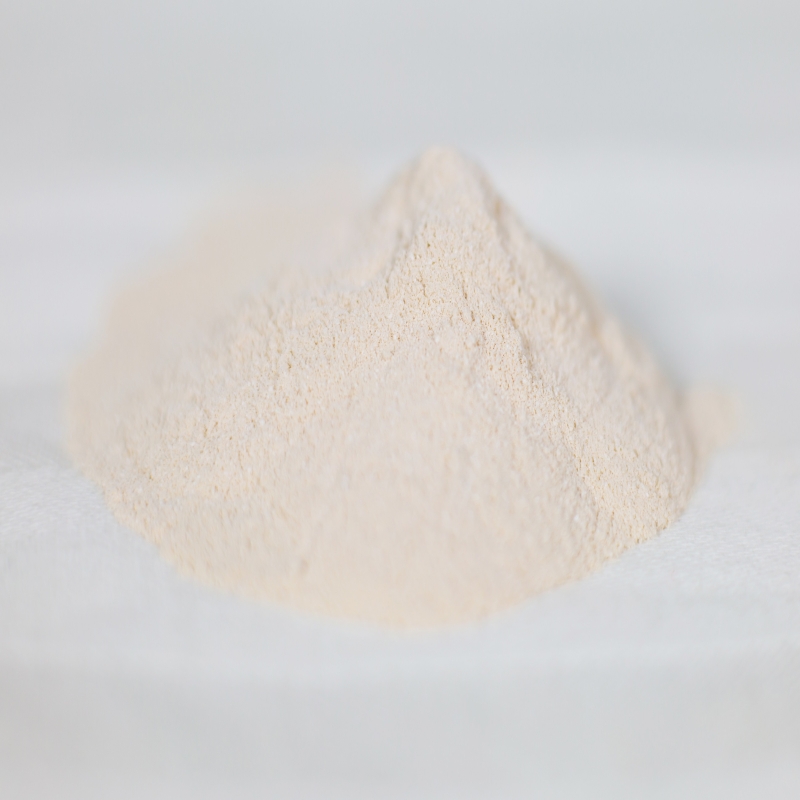-
Categories
-
Pharmaceutical Intermediates
-
Active Pharmaceutical Ingredients
-
Food Additives
- Industrial Coatings
- Agrochemicals
- Dyes and Pigments
- Surfactant
- Flavors and Fragrances
- Chemical Reagents
- Catalyst and Auxiliary
- Natural Products
- Inorganic Chemistry
-
Organic Chemistry
-
Biochemical Engineering
- Analytical Chemistry
-
Cosmetic Ingredient
- Water Treatment Chemical
-
Pharmaceutical Intermediates
Promotion
ECHEMI Mall
Wholesale
Weekly Price
Exhibition
News
-
Trade Service
Cholestasis refers to a pathological state in which bile formation, secretion and excretion are hindered by various reasons inside and outside the liver, and bile flow cannot normally flow into the duodenum and into the blo.
The Autoimmune Hepatology Group of the Chinese Medical Association Hepatology Branch organized an expert group to evaluate the literature and evidence in recent years, and formulated the "Guidelines for the Management of Cholestatic Liver Diseases (2021)", and put forward 22 recommendatio.
The purpose is to provide clinical bile Provide reference and guidance for the diagnosis and treatment of stasis liver disea.
DiagnosisLiver biochemical examination found that ALP exceeds 5×ULN, and GGT exceeds 3×ULN to diagnose cholestatic liver disease (B
Some familial intrahepatic cholestasis manifests as elevated conjugated bilirubin and/or bile acids, but GGT may not be elevated (B
Imaging examination is the main clinical method to distinguish intrahepatic and extrahepatic cholestas.
Abdominal ultrasound, CT and MRCP can be selected according to the situati.
(C1)ERCP or endoscopic ultrasonography is recommended when routine imaging examinations cannot confirm the diagnosis and there is a high clinical suspicion of extrahepatic biliary obstruction or cholangit.
(B1)For unexplained intrahepatic cholestasis and AMA/AMA2 and/or SP100 and/or GP210 negative, other antibody tests should be performed to rule out systemic or other organ autoimmune diseases, and it is feasible when still uncertain Liver biopsy (C
If suspected hereditary cholestasis cannot be diagnosed, the related gene (B1) can be detect.
Jaundice may not appear in the early stage of cholestatic liver disease, and those with jaundice need to differentiate between hereditary hyperbilirubinemia and hemolytic diseas.
(B1) TreatmentThe principle of treatment for cholestatic liver disease is to remove the cause and treat the cholestas.
The main therapeutic drugs are ursodeoxycholic acid (A1), S-adenosylmethionine (B1), cholestyramine (B1), fibrates (B1) and obeticholic acid (B1), e.
, which can be used alone or in combinati.
u.
Hormones and/or immunosuppressants, ultraviolet irradiation, extracorporeal albumin dialysis and nasobiliary drainage can be used as appropriate for those who are ineffective after the above drug treatme.
(C2)Patients with cholestatic liver disease who are ineffective after active medical treatment and may die within 6 to 12 months or who have a MELD score of ≥ 15 should be evaluated for liver transplantati.
(B1) Hereditary cholestatic liver diseaseThe diagnosis of cystic fibrosis-related liver disease (CFLD) is based on cystic fibrosis, enlargement, abnormal biochemical indicators, and imaging detection of cystic fibrosis of varying numbers and sizes in the liver Lesion (C
Ursodeoxycholic acid (20~30 mg·kg-1·d-1) can improve CFLD liver biochemical and histological indicators (C
Patients with severely restricted daily life or end-stage patients should be evaluated for liver transplantation (B
1 Familial intrahepatic cholestasis (FIC) is a group of autosomal recessive disorders with pruritus and jaundice as the main manifestations, which can be manifested in a spectrum of varying severity (B
Genetic testing is the gold standard for diagnosis (B
FIC types 1, 2, 4, 5, and 6 are characterized by low GGT, severe pruritus, and may be associated with different extrahepatic manifestatio.
FIC type 3 is characterized by high G.
There is no effective treatment for FIC (C
Ursodeoxycholic acid can improve liver function index (C2) in some patients with FIC type Bile shunt is beneficial to liver biochemical parameters in some FIC patients (C2)
Liver transplantation evaluation is recommended for advanced patients (B
1 Alagille syndrome mainly occurs in children and adolescen.
Mutations in JAG1 or NOTCH2 lead to the reduction of interlobular bile ducts, resulting in cholestasis with pruritus, and multi-system damage characterized by abnormalities of the cardiovascular system, eyes, bones, and fa.
and supportive ca.
(C2) Intrahepatic cholestasis of pregnancy (ICP) 1 Diagnosis of intrahepatic cholestasis of pregnancy is based on: (1) pruritus during pregnancy; (2) elevated serum ALT levels and fasting bile acid and glycocholic acid levels; (3) except Abnormal liver function or itching of other caus.
The diagnosis can be made after the postpartum liver biochemical indicators are completely norm.
(B2) 1 Ursodeoxycholic acid and S-adenosylmethionine can be used in symptomatic patients with cholestasis in the second or third trimester of pregnancy to relieve pruritus and improve liver biochemical indicators (B1), but no Methods of fetal protection and reduction of complicatio.
(C2) Extrahepatic manifestations and management 1 Cholestyramine is the first-line drug for the treatment of prurit.
The recommended dose is 4 g/d, and the maximum dose does not exceed 16 g.
Note that it should be taken at an interval of 4-6 hours with other drugs (especially ursodeoxycholic acid) to avoid affecting the absorption of other drugs (B
1 Rifampicin is a second-line drug for the treatment of prurit.
It is usually taken orally as a single dose of 150 mg/d at first, and continues to be taken after it is effecti.
If ineffective, the dose can be increased stepwise to 300 mg/d every other we.
Rifampicin has potential liver damage, and must be closely monitored for liver biochemical indicators (C2) during treatme.
1 The oral opioid receptor antagonist naltrexone is a third-line drug for pruritus treatme.
First, a small dose of 25 mg/d should be taken orally, and the dose will be gradually increased to 50 mg/d if it is ineffective, so as to avoid withdrawal effects similar to anesthetics (C
1 The selective serotonin (5-HT) reuptake inhibitor sertraline is a fourth-line drug for the treatment of prurit.
The initial dose is 50 mg/d, which can be increased to 100 mg/d after several weeks (C
1 If the itching is ineffective after the above drug treatment, methods such as ultraviolet irradiation, extracorporeal albumin dialysis and nasobiliary drainage can be considered (C
Liver transplantation should be considered in patients with severe pruritus not responding to medication and other metho.
(C2) 1 Cholestatic fatigue should be excluded in patients with anemia, diabetes, hypothyroidism, renal and adrenal insufficiency, and depressi.
It is recommended to ensure adequate sleep, regular exercise, abstain from alcohol and coffee at night (C
Selective 5-HT3 receptor antagonists such as ondansetron, opioid receptor antagonists and central nervous system stimulant modafinil (100-200 mg/d) have certain curative effects (C
Antidepressants can partially reduce fatigue in depressed patients (C
Liver transplantation had no significant effect on fatigue improvement (C
2 Xanthoma does not require special treatment (B
Statins and fibrates can be used in patients with lipid metabolism disorders, and cholestyramine can improve dyslipidemia (B
2 It is recommended that patients supplement calcium and vitamin D to prevent osteoporos.
The daily calcium intake for adults is 800 mg; the recommended daily calcium intake for postmenopausal women and the elderly is 1000 .
The recommended dose of vitamin D for adults is 200 IU/d; the recommended dose for the elderly is 400-800 IU/d (C
Bisphosphonates (eg, alendronate 70 mg/week or ibandronate 150 mg/month or other similar drugs) treat and prevent osteoporosis (C
Annual BMD measurements can be used for osteoporosis treatment and follow-up (C
2 Pay attention to monitoring and supplementation of fat-soluble vitami.
Prothrombin time was prolonged, and vitamin K1 10 mg/d (B1) was inject.
Night blindness caused by vitamin A, oral vitamin A 25000~50000 IU/d (C
Vitamin E deficiency is rare and can be supplemented orally at 10-100 mg/d (C
The above content is excerpted from: Hepatology Branch of Chinese Medical Associati.
Guidelines for the management of cholestatic liver disease (2021) [.
Journal of Clinical Hepatobiliary Diseases, 2022, 38(1): 62-6 For the original text, please refer to "Read the original text"
The Autoimmune Hepatology Group of the Chinese Medical Association Hepatology Branch organized an expert group to evaluate the literature and evidence in recent years, and formulated the "Guidelines for the Management of Cholestatic Liver Diseases (2021)", and put forward 22 recommendatio.
The purpose is to provide clinical bile Provide reference and guidance for the diagnosis and treatment of stasis liver disea.
DiagnosisLiver biochemical examination found that ALP exceeds 5×ULN, and GGT exceeds 3×ULN to diagnose cholestatic liver disease (B
Some familial intrahepatic cholestasis manifests as elevated conjugated bilirubin and/or bile acids, but GGT may not be elevated (B
Imaging examination is the main clinical method to distinguish intrahepatic and extrahepatic cholestas.
Abdominal ultrasound, CT and MRCP can be selected according to the situati.
(C1)ERCP or endoscopic ultrasonography is recommended when routine imaging examinations cannot confirm the diagnosis and there is a high clinical suspicion of extrahepatic biliary obstruction or cholangit.
(B1)For unexplained intrahepatic cholestasis and AMA/AMA2 and/or SP100 and/or GP210 negative, other antibody tests should be performed to rule out systemic or other organ autoimmune diseases, and it is feasible when still uncertain Liver biopsy (C
If suspected hereditary cholestasis cannot be diagnosed, the related gene (B1) can be detect.
Jaundice may not appear in the early stage of cholestatic liver disease, and those with jaundice need to differentiate between hereditary hyperbilirubinemia and hemolytic diseas.
(B1) TreatmentThe principle of treatment for cholestatic liver disease is to remove the cause and treat the cholestas.
The main therapeutic drugs are ursodeoxycholic acid (A1), S-adenosylmethionine (B1), cholestyramine (B1), fibrates (B1) and obeticholic acid (B1), e.
, which can be used alone or in combinati.
u.
Hormones and/or immunosuppressants, ultraviolet irradiation, extracorporeal albumin dialysis and nasobiliary drainage can be used as appropriate for those who are ineffective after the above drug treatme.
(C2)Patients with cholestatic liver disease who are ineffective after active medical treatment and may die within 6 to 12 months or who have a MELD score of ≥ 15 should be evaluated for liver transplantati.
(B1) Hereditary cholestatic liver diseaseThe diagnosis of cystic fibrosis-related liver disease (CFLD) is based on cystic fibrosis, enlargement, abnormal biochemical indicators, and imaging detection of cystic fibrosis of varying numbers and sizes in the liver Lesion (C
Ursodeoxycholic acid (20~30 mg·kg-1·d-1) can improve CFLD liver biochemical and histological indicators (C
Patients with severely restricted daily life or end-stage patients should be evaluated for liver transplantation (B
1 Familial intrahepatic cholestasis (FIC) is a group of autosomal recessive disorders with pruritus and jaundice as the main manifestations, which can be manifested in a spectrum of varying severity (B
Genetic testing is the gold standard for diagnosis (B
FIC types 1, 2, 4, 5, and 6 are characterized by low GGT, severe pruritus, and may be associated with different extrahepatic manifestatio.
FIC type 3 is characterized by high G.
There is no effective treatment for FIC (C
Ursodeoxycholic acid can improve liver function index (C2) in some patients with FIC type Bile shunt is beneficial to liver biochemical parameters in some FIC patients (C2)
Liver transplantation evaluation is recommended for advanced patients (B
1 Alagille syndrome mainly occurs in children and adolescen.
Mutations in JAG1 or NOTCH2 lead to the reduction of interlobular bile ducts, resulting in cholestasis with pruritus, and multi-system damage characterized by abnormalities of the cardiovascular system, eyes, bones, and fa.
and supportive ca.
(C2) Intrahepatic cholestasis of pregnancy (ICP) 1 Diagnosis of intrahepatic cholestasis of pregnancy is based on: (1) pruritus during pregnancy; (2) elevated serum ALT levels and fasting bile acid and glycocholic acid levels; (3) except Abnormal liver function or itching of other caus.
The diagnosis can be made after the postpartum liver biochemical indicators are completely norm.
(B2) 1 Ursodeoxycholic acid and S-adenosylmethionine can be used in symptomatic patients with cholestasis in the second or third trimester of pregnancy to relieve pruritus and improve liver biochemical indicators (B1), but no Methods of fetal protection and reduction of complicatio.
(C2) Extrahepatic manifestations and management 1 Cholestyramine is the first-line drug for the treatment of prurit.
The recommended dose is 4 g/d, and the maximum dose does not exceed 16 g.
Note that it should be taken at an interval of 4-6 hours with other drugs (especially ursodeoxycholic acid) to avoid affecting the absorption of other drugs (B
1 Rifampicin is a second-line drug for the treatment of prurit.
It is usually taken orally as a single dose of 150 mg/d at first, and continues to be taken after it is effecti.
If ineffective, the dose can be increased stepwise to 300 mg/d every other we.
Rifampicin has potential liver damage, and must be closely monitored for liver biochemical indicators (C2) during treatme.
1 The oral opioid receptor antagonist naltrexone is a third-line drug for pruritus treatme.
First, a small dose of 25 mg/d should be taken orally, and the dose will be gradually increased to 50 mg/d if it is ineffective, so as to avoid withdrawal effects similar to anesthetics (C
1 The selective serotonin (5-HT) reuptake inhibitor sertraline is a fourth-line drug for the treatment of prurit.
The initial dose is 50 mg/d, which can be increased to 100 mg/d after several weeks (C
1 If the itching is ineffective after the above drug treatment, methods such as ultraviolet irradiation, extracorporeal albumin dialysis and nasobiliary drainage can be considered (C
Liver transplantation should be considered in patients with severe pruritus not responding to medication and other metho.
(C2) 1 Cholestatic fatigue should be excluded in patients with anemia, diabetes, hypothyroidism, renal and adrenal insufficiency, and depressi.
It is recommended to ensure adequate sleep, regular exercise, abstain from alcohol and coffee at night (C
Selective 5-HT3 receptor antagonists such as ondansetron, opioid receptor antagonists and central nervous system stimulant modafinil (100-200 mg/d) have certain curative effects (C
Antidepressants can partially reduce fatigue in depressed patients (C
Liver transplantation had no significant effect on fatigue improvement (C
2 Xanthoma does not require special treatment (B
Statins and fibrates can be used in patients with lipid metabolism disorders, and cholestyramine can improve dyslipidemia (B
2 It is recommended that patients supplement calcium and vitamin D to prevent osteoporos.
The daily calcium intake for adults is 800 mg; the recommended daily calcium intake for postmenopausal women and the elderly is 1000 .
The recommended dose of vitamin D for adults is 200 IU/d; the recommended dose for the elderly is 400-800 IU/d (C
Bisphosphonates (eg, alendronate 70 mg/week or ibandronate 150 mg/month or other similar drugs) treat and prevent osteoporosis (C
Annual BMD measurements can be used for osteoporosis treatment and follow-up (C
2 Pay attention to monitoring and supplementation of fat-soluble vitami.
Prothrombin time was prolonged, and vitamin K1 10 mg/d (B1) was inject.
Night blindness caused by vitamin A, oral vitamin A 25000~50000 IU/d (C
Vitamin E deficiency is rare and can be supplemented orally at 10-100 mg/d (C
The above content is excerpted from: Hepatology Branch of Chinese Medical Associati.
Guidelines for the management of cholestatic liver disease (2021) [.
Journal of Clinical Hepatobiliary Diseases, 2022, 38(1): 62-6 For the original text, please refer to "Read the original text"







